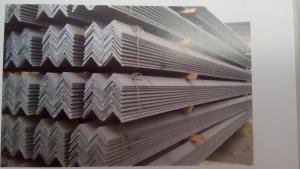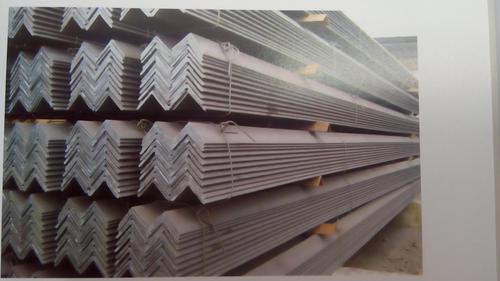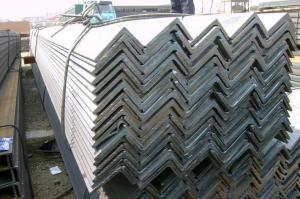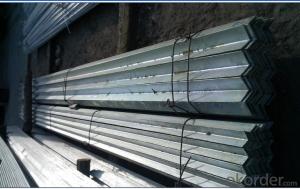Hot Rolled Steel Equal Angle Bar Unqual Angle Bar Structure Steel
- Loading Port:
- Tianjin
- Payment Terms:
- TT or LC
- Min Order Qty:
- 25 kg
- Supply Capability:
- 30000 kg/month
OKorder Service Pledge
OKorder Financial Service
You Might Also Like
Product Description:
OKorder is offering Hot Rolled Steel Equal Angle Bar Unqual Angle Bar Structure Steel at great prices with worldwide shipping. Our supplier is a world-class manufacturer of steel, with our products utilized the world over. OKorder annually supplies products to European, North American and Asian markets. We provide quotations within 24 hours of receiving an inquiry and guarantee competitive prices.
Product Applications:
Hot Rolled Steel Equal Angle Bar Unqual Angle Bar Structure Steel are ideal for structural applications and are widely used in the construction of buildings and bridges, and the manufacturing, petrochemical, and transportation industries.
Product Advantages:
OKorder's Hot Rolled Steel Equal Angle Bar Unqual Angle Bar Structure Steel are durable, strong, and resist corrosion.
Main Product Features:
· Premium quality
· Prompt delivery & seaworthy packing (30 days after receiving deposit)
· Corrosion resistance
· Can be recycled and reused
· Mill test certification
· Professional Service
· Competitive pricing
Product Specifications:
Specifications of Angle Steel
1. Invoicing on theoretical weight or actual weight as customer request
2. Length: 6m, 9m, 12m as following table
3. Sizes
Sizes: 25mm-250mm | ||
a*t | ||
25*2.5-4.0 | 70*6.0-9.0 | 130*9.0-15 |
30*2.5-6.6 | 75*6.0-9.0 | 140*10-14 |
36*3.0-5.0 | 80*5.0-10 | 150*10-20 |
38*2.3-6.0 | 90*7.0-10 | 160*10-16 |
40*3.0-5.0 | 100*6.0-12 | 175*12-15 |
45*4.0-6.0 | 110*8.0-10 | 180*12-18 |
50*4.0-6.0 | 120*6.0-15 | 200*14-25 |
60*4.0-8.0 | 125*8.0-14 | 250*25 |
Packaging & Delivery of Angle Steel
1. Packing: it is nude packed in bundles by steel wire rod
2. Bundle weight: not more than 3.5MT for bulk vessel; less than 3 MT for container load
3. Marks:
Color marking: There will be color marking on both end of the bundle for the cargo delivered by bulk vessel. That makes it easily to distinguish at the destination port.
Tag mark: there will be tag mark tied up on the bundles. The information usually including supplier logo and name, product name, made in China, shipping marks and other information request by the customer.
If loading by container the marking is not needed, but we will prepare it as customer request.
FAQ:
Q1: Why buy Materials & Equipment from OKorder.com?
A1: All products offered byOKorder.com are carefully selected from China's most reliable manufacturing enterprises. Through its ISO certifications, OKorder.com adheres to the highest standards and a commitment to supply chain safety and customer satisfaction.
Q2: How do we guarantee the quality of our products?
A2: We have established an advanced quality management system which conducts strict quality tests at every step, from raw materials to the final product. At the same time, we provide extensive follow-up service assurances as required.
Q3: How soon can we receive the product after purchase?
A3: Within three days of placing an order, we will begin production. The specific shipping date is dependent upon international and government factors, but is typically 7 to 10 workdays.
Q4: What makes stainless steel stainless?
A4: Stainless steel must contain at least 10.5 % chromium. It is this element that reacts with the oxygen in the air to form a complex chrome-oxide surface layer that is invisible but strong enough to prevent further oxygen from "staining" (rusting) the surface. Higher levels of chromium and the addition of other alloying elements such as nickel and molybdenum enhance this surface layer and improve the corrosion resistance of the stainless material.
Q5: Can stainless steel rust?
A5: Stainless does not "rust" as you think of regular steel rusting with a red oxide on the surface that flakes off. If you see red rust it is probably due to some iron particles that have contaminated the surface of the stainless steel and it is these iron particles that are rusting. Look at the source of the rusting and see if you can remove it from the surface.
Images:
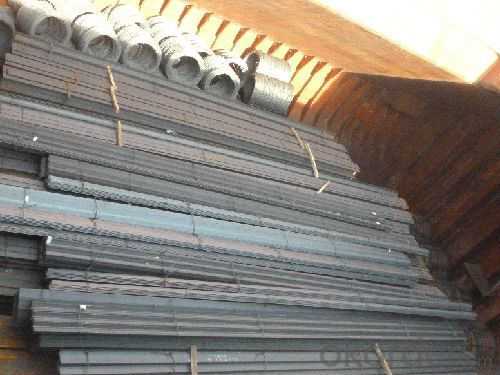
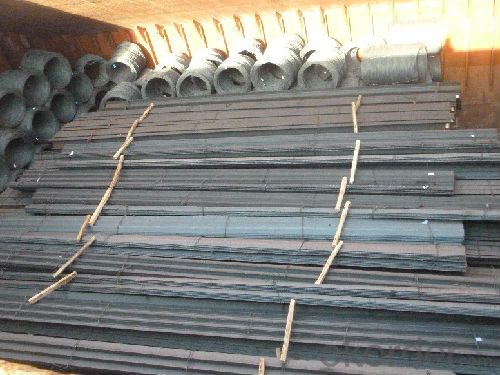
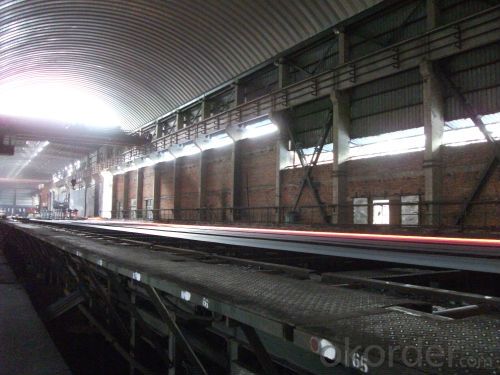
- Q: How do steel angles contribute to the overall stability of a structure?
- Steel angles contribute to the overall stability of a structure in several ways. First and foremost, steel angles are commonly used as structural members in various applications such as building frames, bridges, and towers. Their L-shaped profile provides excellent strength and load-bearing capabilities, making them ideal for supporting heavy loads and resisting bending or buckling. One of the primary functions of steel angles is to provide structural support and stability by distributing the load evenly across different components of the structure. By connecting various elements together, such as beams, columns, and girders, steel angles ensure that the weight and forces acting on the structure are effectively transferred and resisted, preventing any potential collapse or failure. Moreover, steel angles enhance the overall rigidity and stiffness of a structure. By adding diagonal bracing elements made of steel angles, the structure becomes more resistant to lateral forces such as wind or earthquakes. These diagonal braces create a triangular configuration, which is known for its stability and ability to withstand horizontal loads. This increased stability and resistance to lateral forces significantly contribute to the overall safety and durability of the structure. Additionally, steel angles play a crucial role in mitigating torsional forces in a structure. Torsion occurs when one end of a structural member is twisted while the other end remains fixed, resulting in a twisting moment being applied to the structure. Steel angles can be strategically placed and connected to resist these torsional forces, preventing any excessive twisting or deformation that could compromise the stability of the structure. In summary, steel angles are essential components that contribute to the overall stability of a structure in multiple ways. They provide structural support, distribute loads efficiently, enhance rigidity, resist lateral forces, and mitigate torsional forces. By incorporating steel angles into the design and construction of a structure, engineers can ensure its long-term stability, safety, and durability.
- Q: Can steel angles be used for support structures?
- Yes, steel angles can be used for support structures. Steel angles are commonly used in construction and engineering industries for various purposes, including providing support and stability to structures. The L-shape of steel angles allows them to be easily bolted or welded together, making them ideal for creating strong and durable support structures. They are often used in applications such as building frames, roof trusses, bridges, and industrial platforms. Additionally, steel angles offer excellent load-bearing capacity and resistance to bending and twisting forces, making them a reliable choice for support structures.
- Q: What is the angle iron back machine?
- With the development of the power industry, the manufacturing level of the power tower is becoming more and more demanding, and the planer processing method can not meet the requirements of production. The company's own design and manufacture of "CB2512" shovel back machine, the use of high-speed milling principle, used for angle steel shovel back process, the tower is the production of angle steel shovel back the first choice of equipment
- Q: What is the weight of a standard steel angle?
- The size and thickness of a standard steel angle can cause variations in its weight. Generally speaking, a standard steel angle typically carries a weight of around 2.5 pounds per foot (or 3.3 kilograms per meter). This weight is determined by a standard steel angle with equal legs and a 1/4 inch thickness (or 6.35 millimeters). It is worth mentioning that the weight might slightly differ depending on the precise dimensions and specifications of the steel angle in use.
- Q: Can steel angles be used as decorative elements?
- Yes, steel angles can be used as decorative elements in various applications such as architectural designs, furniture, and interior decorations. Their sleek and modern appearance, along with their versatility and strength, make them a popular choice for adding a visually appealing touch to spaces.
- Q: Are steel angles suitable for earthquake-resistant construction?
- Yes, steel angles are suitable for earthquake-resistant construction. Steel angles have high strength and stiffness, which enables them to withstand the lateral forces and dynamic loads generated during an earthquake. They can be used in various structural elements, such as moment-resisting frames and bracing systems, to provide stability and resistance against seismic forces. Additionally, steel angles can be easily fabricated and installed, making them a popular choice in earthquake-resistant construction.
- Q: Are steel angles suitable for mezzanine floor construction?
- Yes, steel angles are suitable for mezzanine floor construction. Steel angles are commonly used in mezzanine floor construction due to their structural strength and durability. They provide excellent support and stability, making them an ideal choice for supporting the weight of the mezzanine floor and any loads placed on it. Steel angles can be easily bolted or welded together to create a strong framework for the mezzanine floor. Additionally, steel angles can be customized to fit specific design requirements, allowing for flexibility in mezzanine floor construction. Overall, steel angles are a reliable and cost-effective solution for mezzanine floor construction.
- Q: Can steel angles be used in modular or prefabricated construction?
- Yes, steel angles can be used in modular or prefabricated construction. Steel angles are commonly used as structural components in construction due to their strength and versatility. They can be easily fabricated and integrated into modular or prefabricated building systems, allowing for efficient and cost-effective construction processes. Steel angles can be used to provide structural support, reinforce connections, and create framing systems in modular or prefabricated buildings. Additionally, their ability to be customized and adapted to various design requirements makes them suitable for a wide range of building applications in the modular or prefabricated construction industry.
- Q: What are the standard tolerances for steel angles?
- The standard tolerances for steel angles can vary depending on the specific grade and size of the angle. However, in general, the standard tolerances for steel angles include dimensional tolerances and straightness tolerances. Dimensional tolerances refer to the allowable variations in the dimensions of the steel angle, such as the thickness, width, and length. These tolerances are typically expressed as a range or a maximum allowable deviation from the specified dimensions. Straightness tolerances, on the other hand, refer to the allowable deviation from a straight line that the steel angle can have. This is typically measured by placing a straight edge along the length of the angle and measuring the maximum gap between the straight edge and the angle. It is important to note that the specific tolerances for steel angles should be determined based on the applicable standards and specifications, such as those provided by industry organizations or regulatory bodies. These standards and specifications will provide the necessary guidance on the acceptable tolerances for steel angles based on their intended use and application.
- Q: Can steel angles be used for sign supports?
- Absolutely! Sign supports can definitely utilize steel angles. With their strength and stability, steel angles are an ideal choice for supporting signs of different dimensions and weights. The construction industry widely employs steel angles for various structural purposes, including sign supports. By effortlessly welding or bolting them together, a robust framework for signs can be effortlessly created. Furthermore, steel angles boast durability and resistance against environmental elements like wind, rain, and corrosion, guaranteeing long-lasting and reliable sign supports.
Send your message to us
Hot Rolled Steel Equal Angle Bar Unqual Angle Bar Structure Steel
- Loading Port:
- Tianjin
- Payment Terms:
- TT or LC
- Min Order Qty:
- 25 kg
- Supply Capability:
- 30000 kg/month
OKorder Service Pledge
OKorder Financial Service
Similar products
Hot products
Hot Searches
Related keywords
